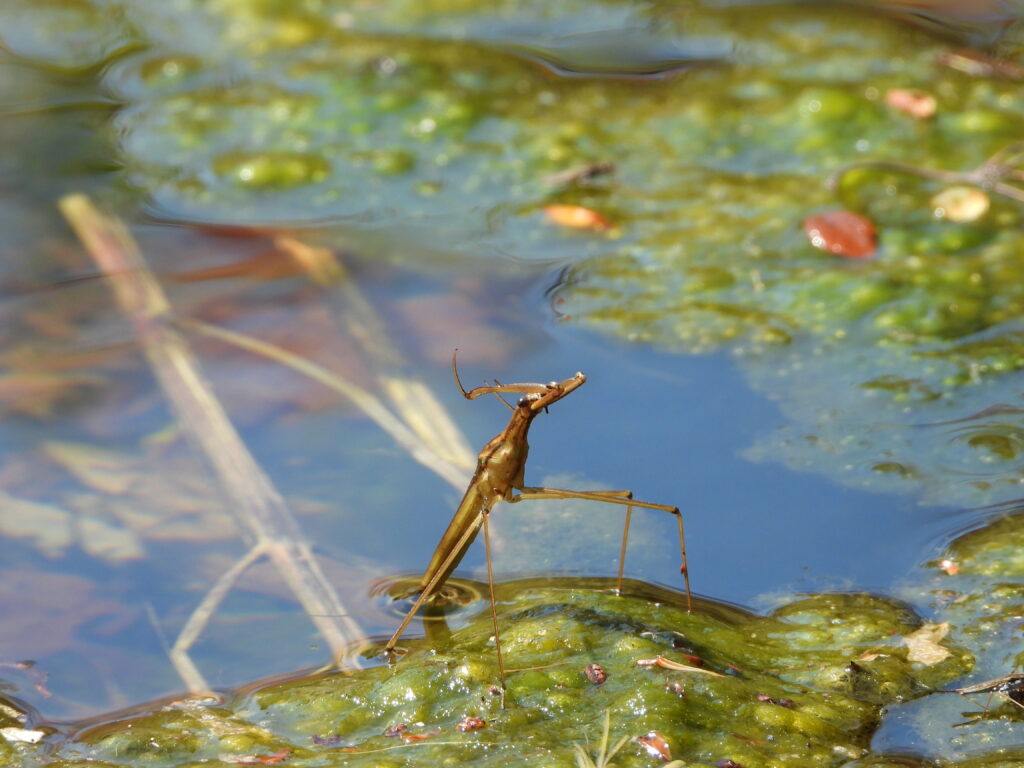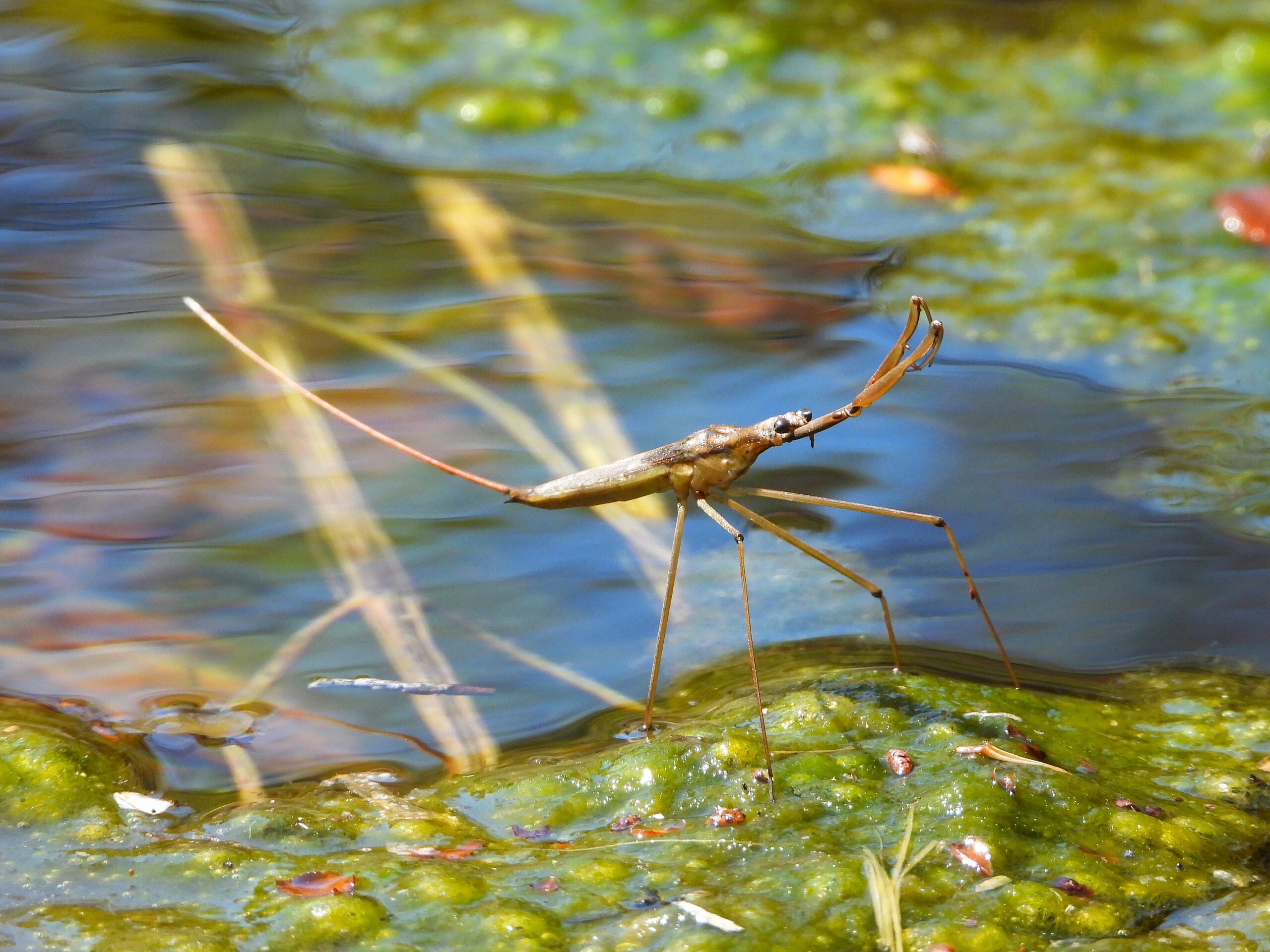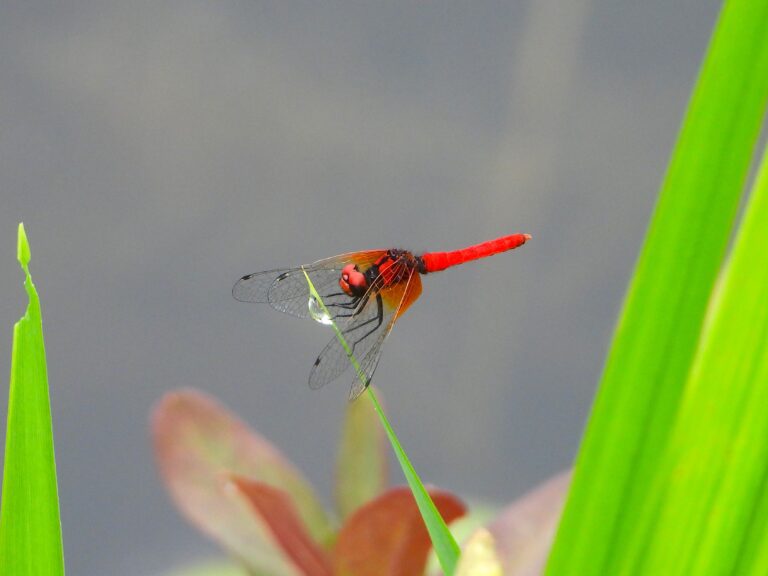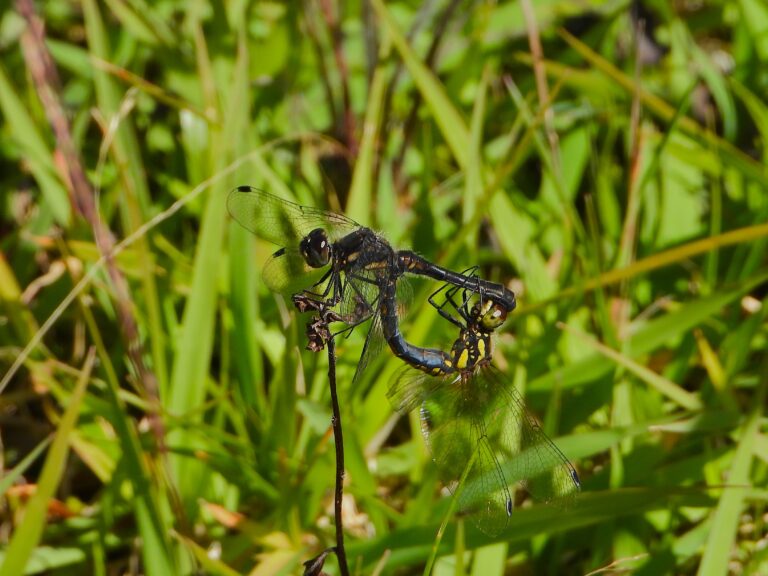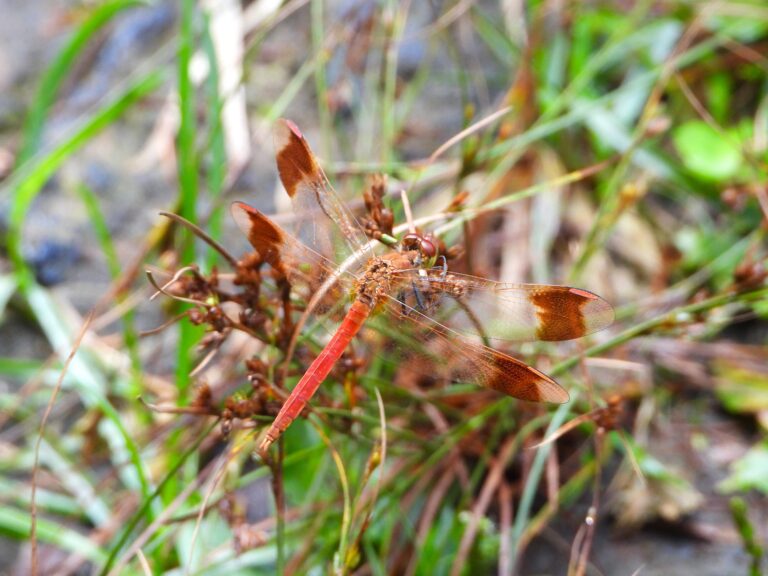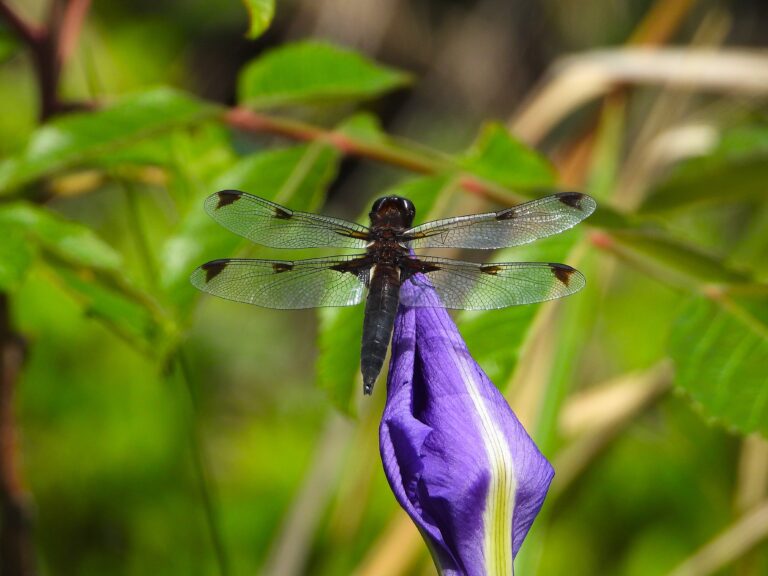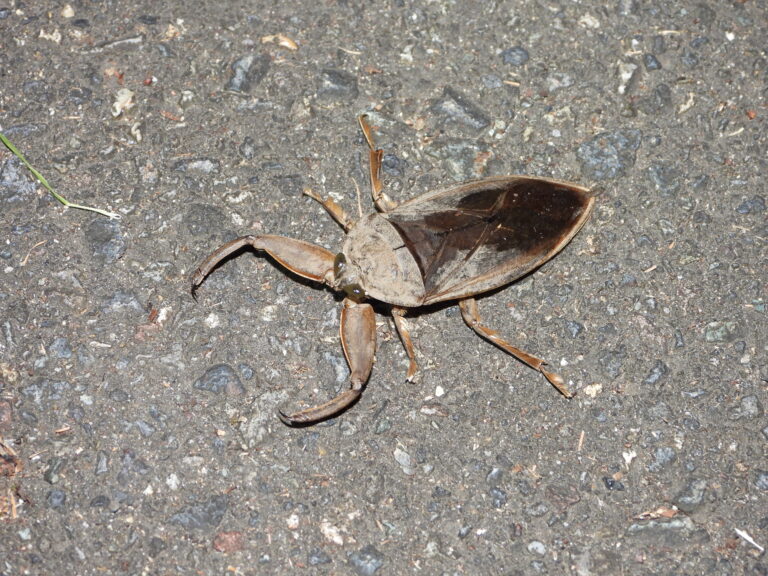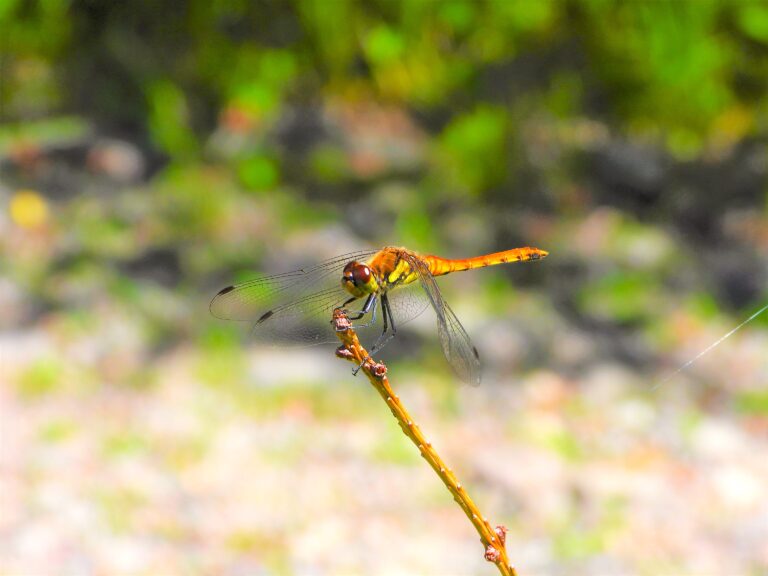Water Scorpion (Ranatra chinensis) – Wildlife of Japan
Introduction
Slender and stick-like, the Water Scorpion is a predatory true bug found in still and slow waters across Japan. It breathes through a long tail-like siphon used as a snorkel. In Japan, it is generally treated as Ranatra chinensis, though closely related species also occur.
Appearance
Adults are about 40–50 mm long, brown to straw-brown, with long grasping forelegs and a tail-like breathing siphon about body-length. The forelegs bear sharp spines used to seize prey. Eggs of Ranatra have two slender respiratory horns, a distinctive feature of this genus.
Habitat & Distribution
Found in rice paddies, ponds, marshes, ditches, and reservoirs with abundant vegetation. Within Japan, it ranges from Hokkaidō to Okinawa; outside Japan, it occurs in Korea, China, Taiwan, and the Russian Far East.
Behavior
A classic ambush predator: it clings to stems head-down and strikes passing prey with spined forelegs. It can fly well and may appear at artificial water bodies during dispersal. In paddy fields, adults breed from May to July and move to ponds when the fields dry.
Diet
Feeds on aquatic insects, tadpoles, and small fish, using its beak to inject digestive enzymes and suck fluids (external digestion).
Reproduction & Life Cycle
Adults overwinter underwater and become active in spring. Mating occurs May–July. Females insert eggs (with two horns) into wet mud or moss near water. Nymphs hatch in about two weeks, molt five times, and become adults by late summer.
Conservation
Not nationally red-listed, but some prefectures classify it as Near Threatened or Vulnerable (e.g., Fukuoka NT, Tokyo VU). Habitat loss and pesticides are the main threats.
Where to See in Japan
- Rice paddies and irrigation ponds in late spring–summer
- Park ponds with dense vegetation
- Artificial pools or tanks at night (drawn by light during flight)
Observation tip: Look quietly along aquatic plants; they often remain motionless near the surface.
Similar Species & ID Tips
Hime-mizukamakiri (Ranatra unicolor) — Smaller (24–32 mm) with a shorter breathing siphon.
It has one spine on the foreleg, while the Water Scorpion (R. chinensis) has two.
Author’s Impression
I once found this species waiting motionless among stems in a summer rice field—a true underwater ambusher. It moves slowly but reacts instantly to prey. Photographing it requires patience and a very steady hand.
